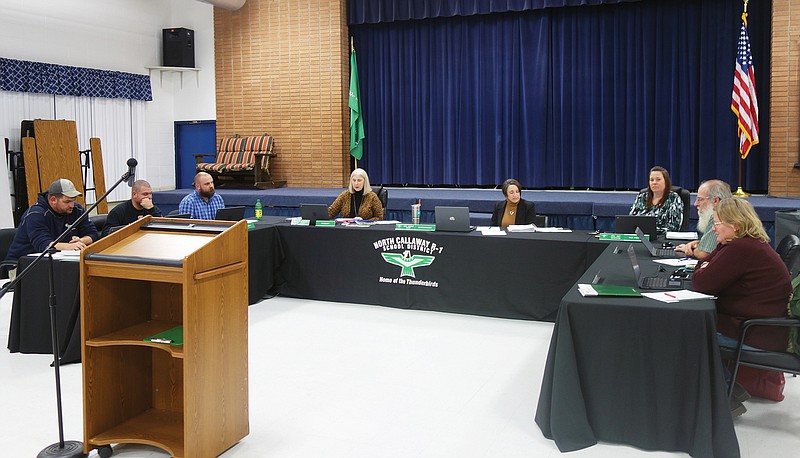This article is free to all readers because it includes information important to public safety and health in our community.
WILLIAMSBURG - North Callaway R-1 Board of Education members voted to adopt changes to the district's COVID-19 reentry plan during a Thursday meeting.
However, the board decided against adopting Gov. Mike Parson's proposed guidance under which, when two students come into contact while properly wearing facemasks and one student is later diagnosed with COVID-19, the other student doesn't have to quarantine. Board members expressed skepticism about whether masks could really prevent the spread of the disease from an infected student to a close contact.
"We don't know if it's going to work, and it's not backed by the CDC," board member Amy Reinhard said.
The district does not plan to adopt a mask requirement for students or staff.
Among the changes that were adopted was one proposed by board member Dustin Moore regarding quarantine policies for students.
It reads: "If there's a positive test in a household, all school-aged members of the household that were present during the 48 hours leading up to the first symptoms or the positive test will be required to attend school virtually for 14 days from the last day of contact."
Take, for example, a student who splits time between her father's house and her mother's house. She's with her father on Sunday and goes to her mom's house Monday, and Monday afternoon her father tests positive for COVID-19. That student would have to switch to virtual learning for the next 14 days - the U.S. Centers for Disease Control and Prevention's recommended quarantine period.
"If somebody's positive in your household, you shouldn't be attending school," Moore said.
In the past, calls about which kids quarantine and which don't would've been made by the Callaway County Health Department. However, as cases have ballooned and the health department falls further behind with contact tracing, that's not always practical, agreed board members.
"Some kids aren't hearing from the health department until after their quarantine ends," board member Sandy Lavy said.
District administration noted that should the district tell a student to switch to virtual learning and then, later, the health department decides that student doesn't actually have to quarantine, it could complicate certain paperwork the district has to file with the state. Board member Kendall Pipes pointed out there's nothing to stop parents from lying to the school about whether members of the household were together within that 48-hour period.
"The chances that would happen a significant amount is pretty slim," board member Greg Huddleston said.
The motion passed 5-2, opposed by Reinhard and Pipes.
The other major change primarily affects teachers.
The board passed a policy stating if the district moves to 100 percent distance learning, teachers who come to the building to remotely teach their students may bring their school-age children with them. Those children can do classwork in a media center or use the gym under the supervision of North Callaway's non-certified staff.
Board member Tim Safranski positioned this as a benefit the district can offer its teachers.
Auxvasse Elementary principal Jessica Huyser said it'll be quite the boon for teachers who have school-aged children, man of whom struggled this spring to teach their classes and ensure their own children completed online learning.
"When we shut down in March, my children were at home having to learn nothing or at their grandma's, who couldn't help them," she said.
Other changes were less major, such as allowing students' medications to be distributed from the health room instead of mobile carts, allowing schools to hold outdoor assemblies and allowing arriving students and staff to have their temperature taken using a hand-held thermometer when entering through a door not equipped with a thermal camera. The staff re-entry plan has been updated to note that the district isn't currently labelling staff as "essential workers" and to list duties for paraprofessionals and non-certified staff in the event of a mandatory closure.
To view those changes and others, visit bit.ly/3lKzf1c.

